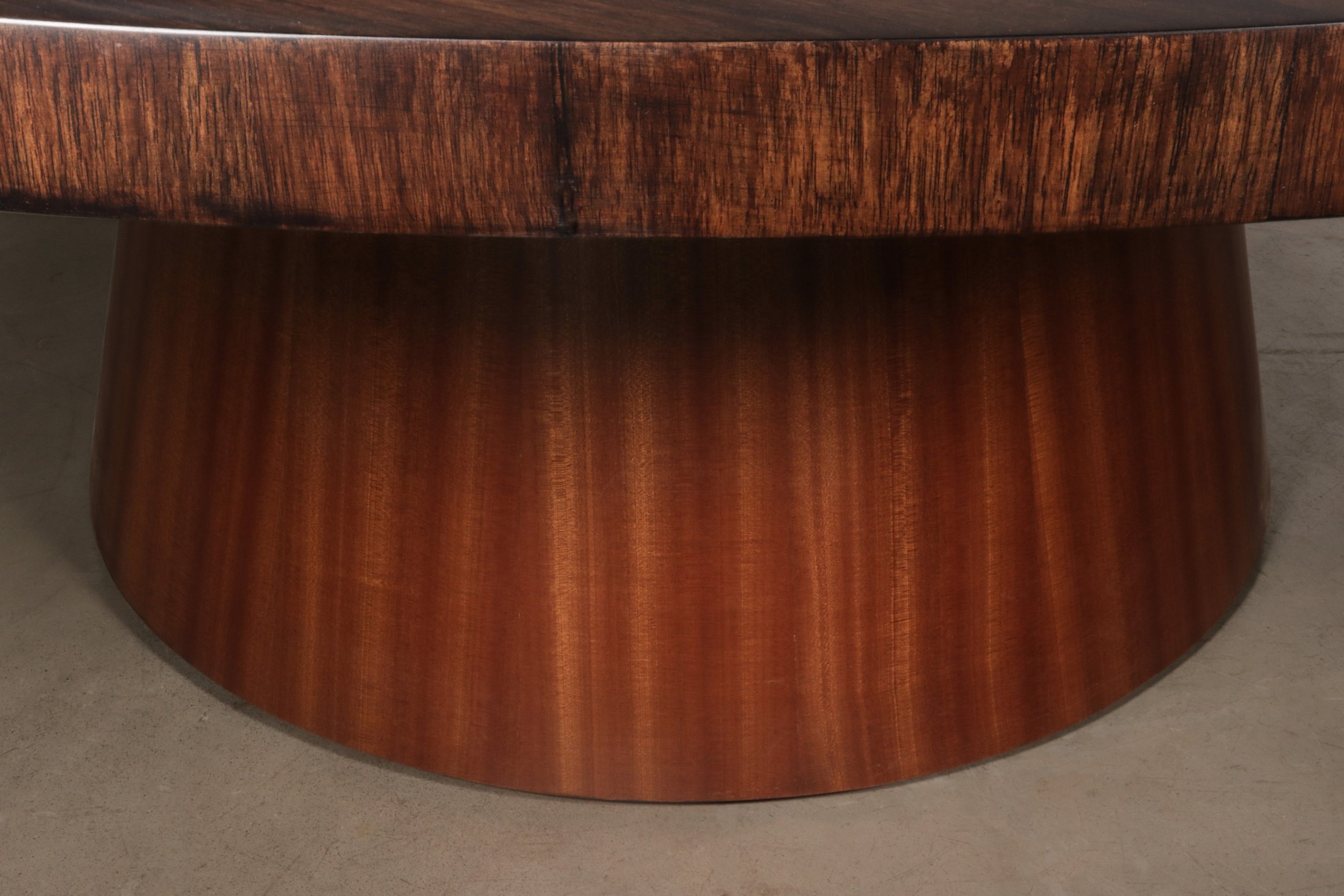Studio Kër
Studio Kër, founded by creative director Michael Bennett, is a platform for his visionary design concepts. The studio's mission is to craft intentional objects and spaces that harmonize with the natural world and encourage meaningful interactions between humans. Studio Kër is committed to exploring both contemporary and historical elements of the African diaspora, challenging traditional Western perceptions of design and architecture, and creating spaces for Black agency.
The Costantini team was thrilled to embark on this collaboration with the Kër team beginning in Spring of 2022. Over the past two years we have enjoyed developing a collection of collectible, functional art. It has truly allowed us to demonstrate our artisans’ mastery across many different materials such as fiberglass, wood, stone, leather, fabric, bronze, iron and parchment.
The moniker Kër refers to the word for “house” in Wolof, the language spoken by the Wolof people in Senegal, and the work of the studio thereby also represents the essence of home, a sacred space where meaningful connections can thrive. Studio Kër is driven by a desire to enrich cross-cultural dialogues and provide a platform for diverse voices to flourish, celebrating the power of our shared narratives.
Studio Kër’s craft is characterized by a commitment to sustainability and the rebirth of materials. They defy the cycle of waste by advocating for materials to live multiple lives, believing that they hold stories waiting to be transformed. Every aspect of Studio Kër’s creative process, from strokes to material choices, is infused with intentionality.
Studio Kër’s philosophy revolves around four core principles: STUDY, PLAY, LISTEN, and SPEAK. Through continuous learning, playful experimentation, attentive listening, and purposeful communication, Studio Kër deepens their understanding of materials and the environment enhancing creative insight and sensitivity.
Costantini's first foray into its collaboration with Studio Kër is inspired in part by the ubiquity, accessibility and versatility of the internationally-produced white polypropylene ‘Monobloc’ chair (D.C. Simpson, 1946), “Gumbo Lounging Chair” is a fiberglass lounging chair and corresponding cushion that ultimately makes two propositions for seating—or potentially two seats from one. The chair emphasizes connection in Black gathering spaces for fellowship, intimacy and celebration. The easily-anthropomorphized cushion is paired on the seat, or on the floor in the universal tradition.
The chair features a nearly 1” thick fiberglass frame with a smooth seat and textured back/underside.
The Gumbo Chair & Stool
In the coastal south Gumbo is a humble meal of royalty passed down from the recipes and traditions of African and African Diaspora cultures; in most cases recipes are sustained through oral tradition. The lessons in these traditions are fundamental to how Black culture in the Coastal South understands itself today in a similar way the stool is the first seat a child is instructed to rest, sit, learn or have their hair nourished and cared for. The accompanying stool is a representation of where we’ve come from and the genius of Black people’s humble traditions.




























Cape Mantle
The mantle in the Black family is the first archive a Black person engages with as it often hosts family portraits, Bibles, books and ephemera that are significant for a family’s understanding and relationship to their traditions and oral histories. The objects placed on the mantle serve as pillars to our histories while the mantle itself holds the foundation for our legacies to be passed forward into the future. Cape Mantle moves the mantle as an object from a silhouette in Black heritage and culture into a promontory vessel of black heritage and culture.











Pews
“Pews” are informed by the close proximity of Black bodies gathering in sacred space. “Pews” much like the family sofa reduces the space between one another to set the environment for close connection. The work identifies qualities from both church pew and sofa design by integrating the uniformity of a pew with the plasticity and softness of a sofa.










Mo-Mo Table
A non-hierarchical dining table for 8–10 persons proposes a communal experience for breaking and sharing proverbial and actual bread. Inspired by the relief work of Akili Ron Anderson’s frieze “Last Supper” 1982 centering a foreshortened circular table, “Mo-Mo Table”, incorporates a turntable representing the return to communal gathering spaces around the shared table. “Mo-Mo Table ‘’acknowledges the sustenance, oral tradition, and the birthplace of the griot all sustained by the stability and love of Black matriarchs. At this table the crumbs of collective Black pasts transform into the metaphorical recipes for the traditions and rituals carried into Black futures.
















Paw Paw’s Chair
“PaPa’s Chair” confronts the notion of singularity in connection to a chair’s use. Rather than instructing the chair as a formal method for congregating, “PaPa’s Chair” exists in connection to MoMo’s table; expressing the environment of love that exists when the objects used to form congregation embody their holistic purpose. In doing so PaPa’s Chair nested at MoMo’s table becomes the setting for communion.










Da Block (1, 2, 3, 4, 5)
Solid sculptural functional artworks hand carved out of Red Travertine, Black Zeus, and Red Onyx. Inquire for details.
















Ursa Minor
Engaging with concepts of hearth and gathering, “Ursa” casts an inviting glow from beneath its canopy referencing the thatched roofs of archetypal shogun home style buildings found in the African states Benin and Mali as well as Louisiana. The illumination the lamp provides is informed by the glow of Black folk’s oiled skin, round eyes and gold teeth.
Ursa Major
Engaging with concepts of hearth and gathering, “Ursa” casts an inviting glow from beneath its canopy referencing the thatched roofs of archetypal shogun home style buildings found in the African states Benin and Mali as well as Louisiana.The illumination the lamp provides is informed by the glow of Black folk’s oiled skin, round eyes and gold teeth.
















